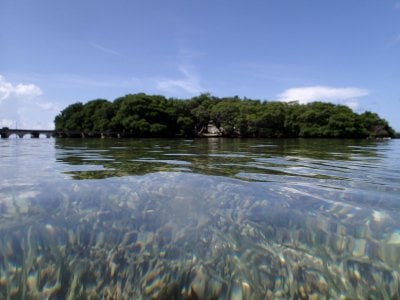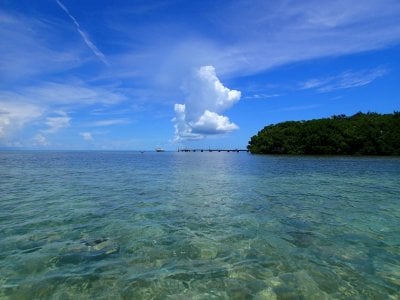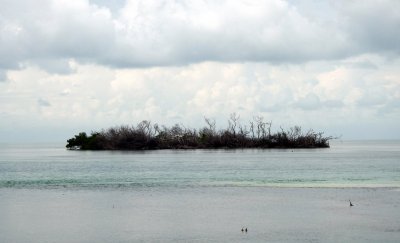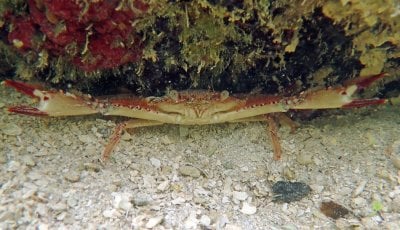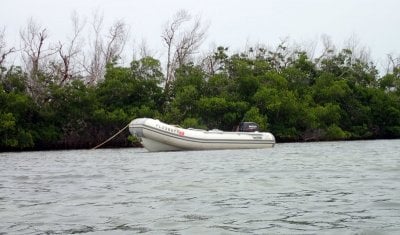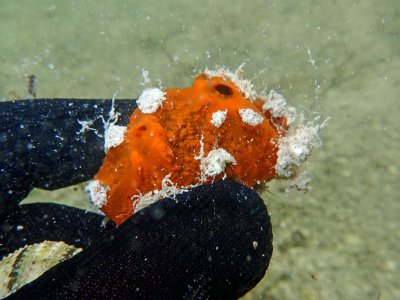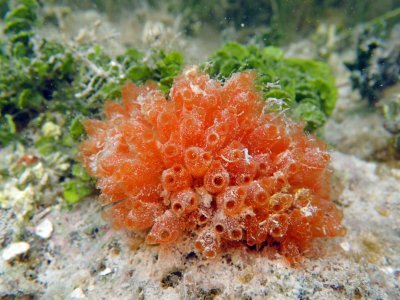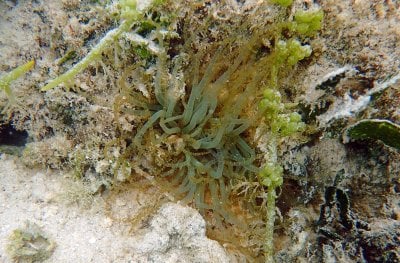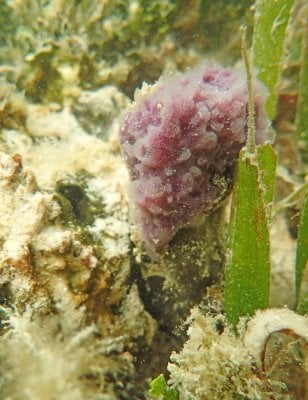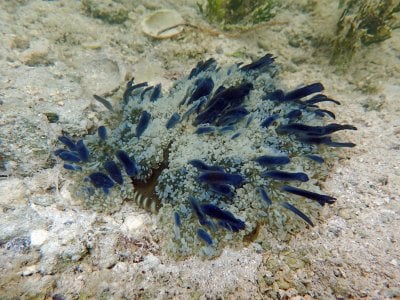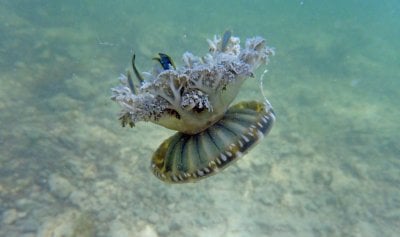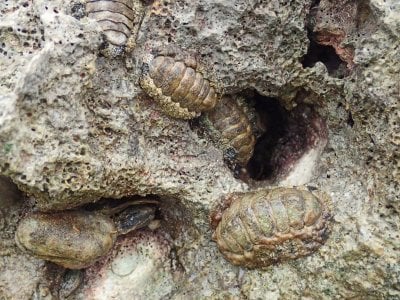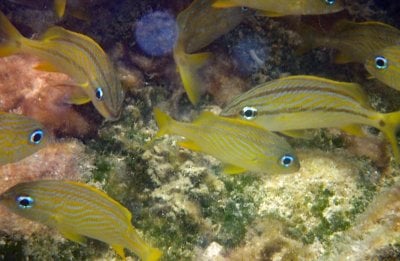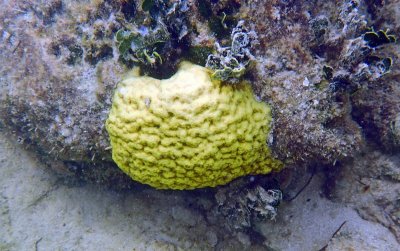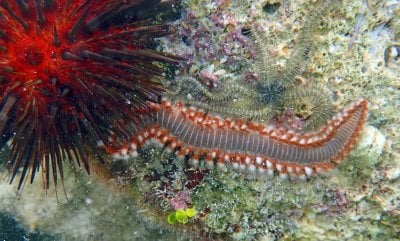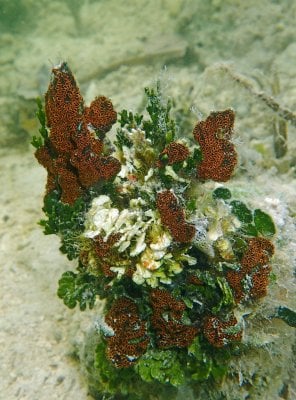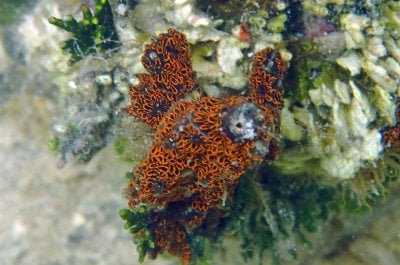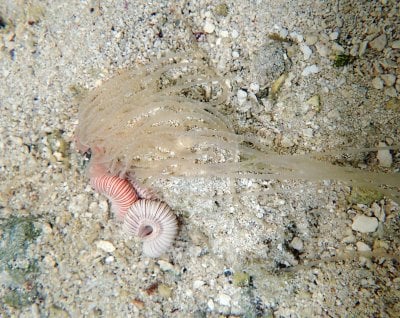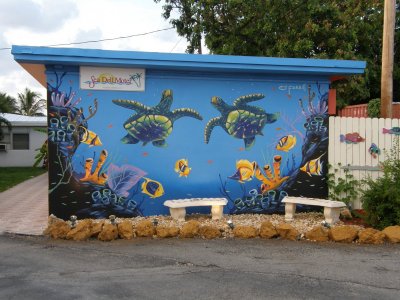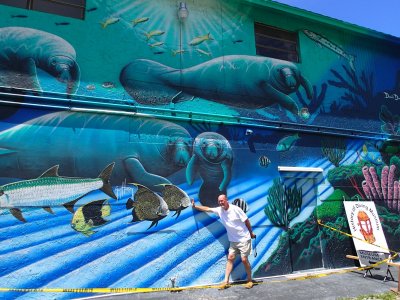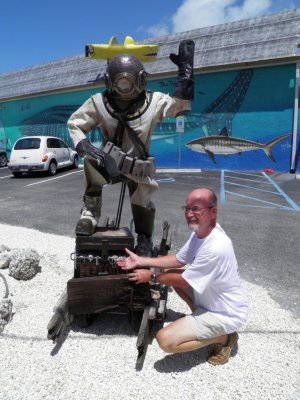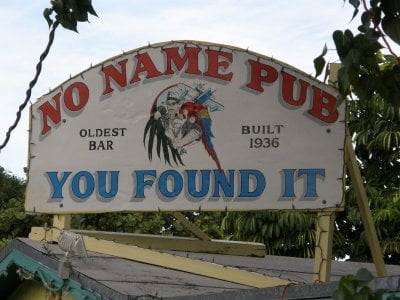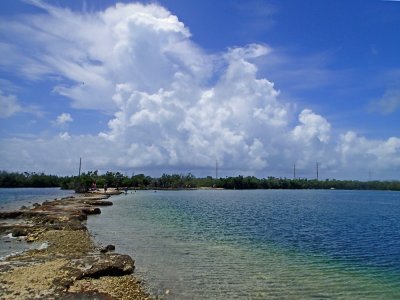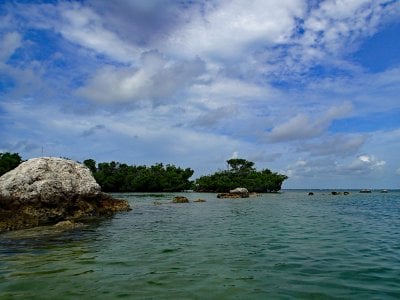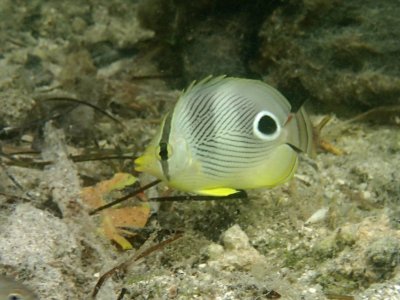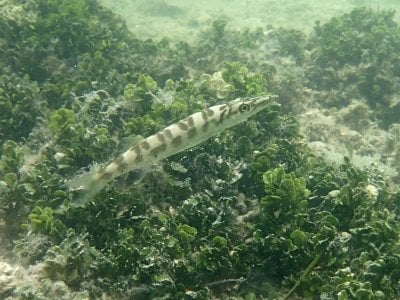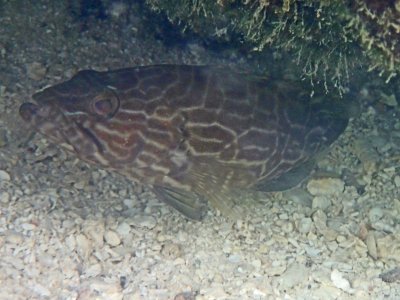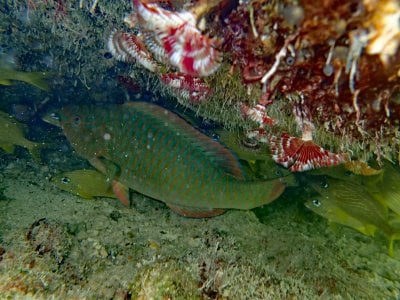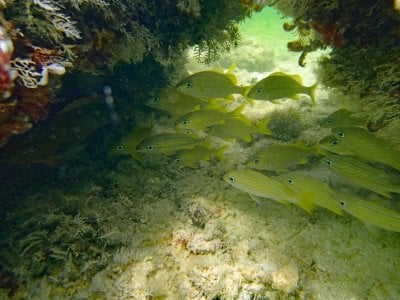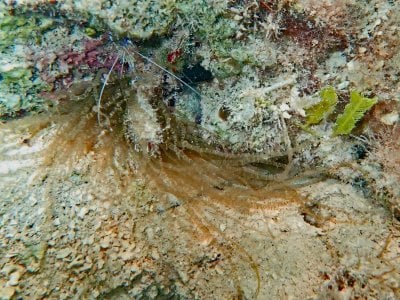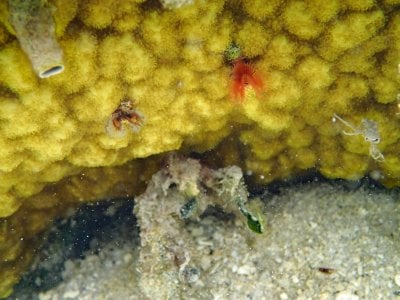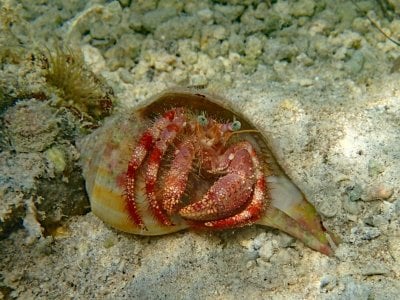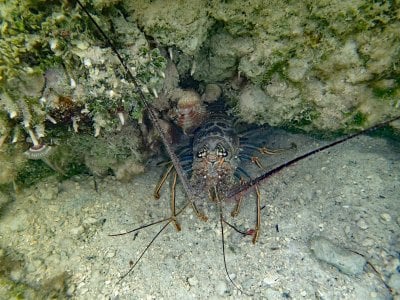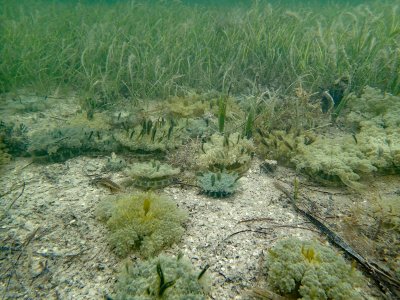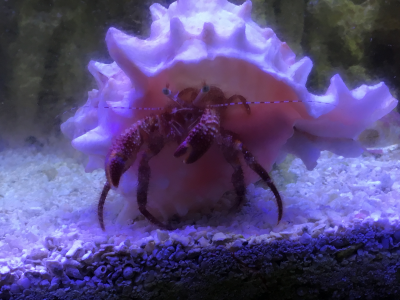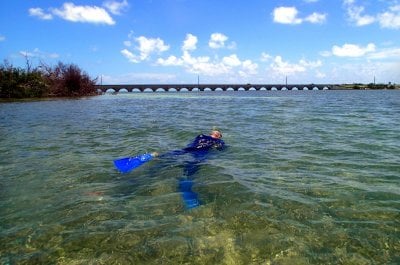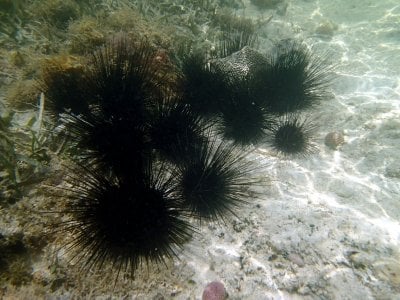And so we move on to Day#3 of our snorkel trip. It’s the last day and as it turned out, the best day of the rip! Although the weather had been good the first 2 days, it was spectacular for the last day. Sunny, hot, almost calm winds, almost flat water, what snorkeler could ask for more? Our aquarium club friends had taken a charter out to Looe Key which is 5+ miles out on the Atlantic side of the Keys and is part of the 2nd biggest barrier reef in the world (after the Great Barrier Reef off Australia). We’ve been there a number of times and maybe unlike most snorkelers, we enjoy the shallows where we can interact with the ocean floor and even lift rocks to see what’s underneath. Out at the big reef it’s 1005 look but Do Not Touch!
So here is Little Money Key from above and from the Zodiac looking back to the southwest at the boat ramp just 1/4 mile away. The island is at the southwest end of the Seven Mile Bridge about 1/4th mile off the boat ramp that is right at the end of the bridge. It’s a bit bigger than an average size lot for an average residential home in an average middle class neighborhood and it has 1 house on it. We find it unused 9 out of 10 times that we visit the snorkel area just off the north side of the island. The shot of my feet off the side of the Zodiac is just to show how clear the water was. You are looking through about 3 feet of water at the bottom.
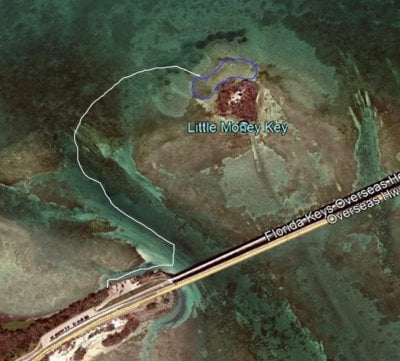
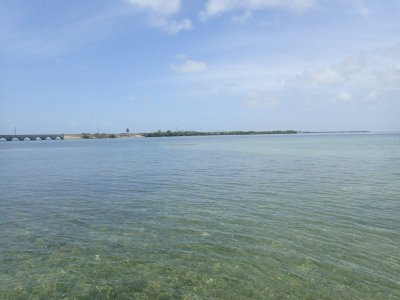
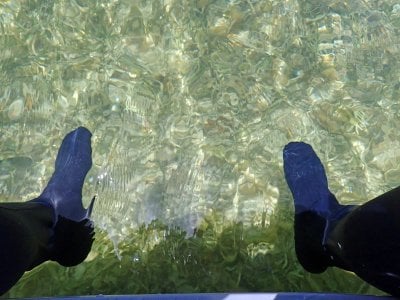
This is one of the 2 sea stars I collected. The other is a light green brittle star. We saw others, but I only wanted 2, one for each tank. I’d say the sea star population out here was a bit below normal and could still be a result of Hurricane Irma form a year and a half earlier.
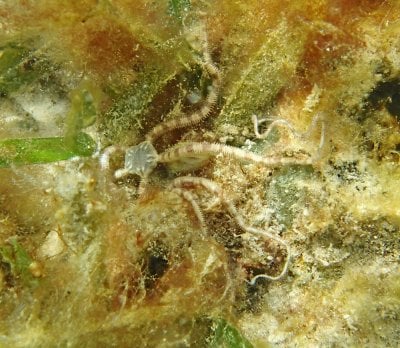
The common sps finger coral seems to do quite well out here. The bottom is littered with both dead and alive versions. Unfortunately, it is sps coral and therefore illegal to collect ($500 to $1000 fine) and after all, I don’t believe it’s photosynthetic, so it would be difficult to keep anyway.
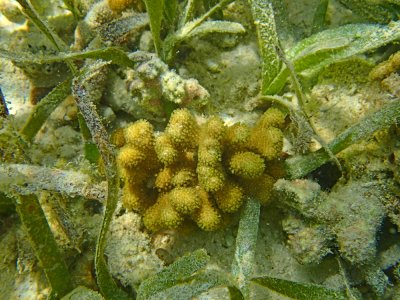
This one is less common in the shallows as far as we’ve found. It looks a lot more like an sps coral that is more common out on the big reefs some 6 to 8 miles away to the west and south. I wonder if it will still be there when we go back in a couple of weeks with the Ocala Aquarium Club?
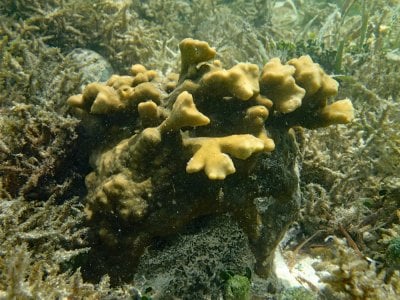
I’ve collected green zoas out here and I’ve noticed they have some slightly different pattern as you go from one colony to another. The zoas in the first pic have just a single spoke that divids it in half. The second one has multiple spokes. I also know that under quite strong led lighting (high in my tank) they morph into an almost sky blue color and lose all the spokes of their pattern. But they still grow and reproduce well. The last photo is a view of the underside of a rock that has these green zoas growing on it. On top they look like any zoas in our tanks, but the ones that are underneath have to stretch to get to the light and food!
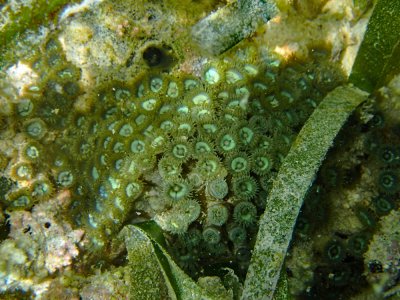
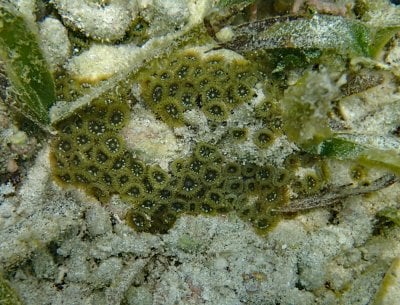
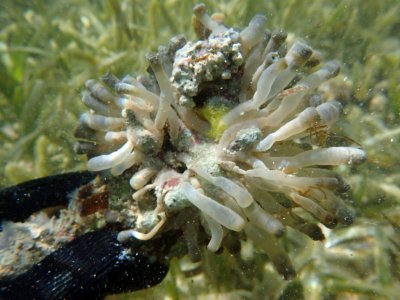
Elaine saw this little guy, a Dusky Damsel I believe. I'd like to have one of these if only they weren't so aggressive. In fact, a blue and yellow damsel actually bit at my glove a couple of times when I tried to pick up an empty and broken queen conch shell. Pretty obvious to me that it was home to the damsel and I wasn't welcome!
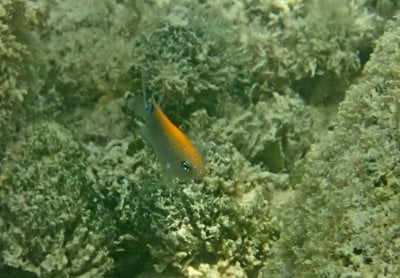
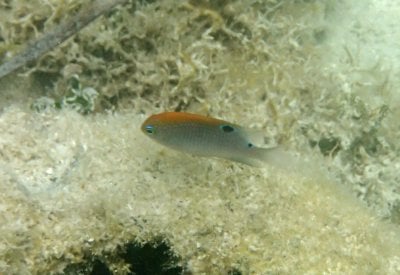
Oh and lets backtrack to yesterday for a second. Here is a photo of a juvenile angelfish we saw at the very end of the day while in the shallows off the beach in front of the marina.
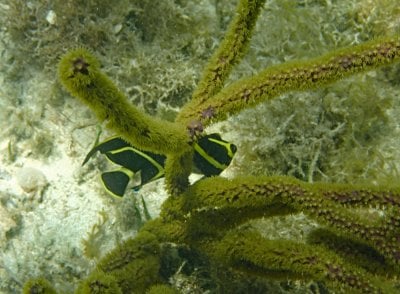
Of course as some of you know, I love anemones and here are a couple of Curly-Q nems that are ultra common around here. They don’t seem to get very big and the tend to attach along the edges or even the undersides of rocks. I’m holding this rock upside down.
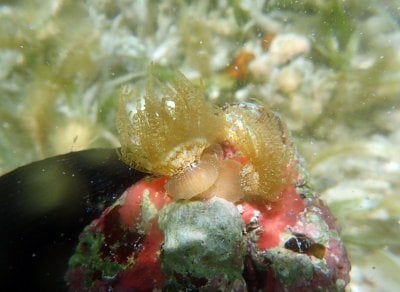
My favorite blue sponge. I brought a small one home being very careful to keep it under water all the time and in less than 2 weeks it’s almost gone. Sponges are a serious love/hate relationship for me. I love the look and variation in both colors and shapes. But I hate that 99% of them do NOT do well at all in reef aquariums. Maybe if you had a dedicated sponge tank and feed it specific food, but I don’t know of anybody who has done it successfully.
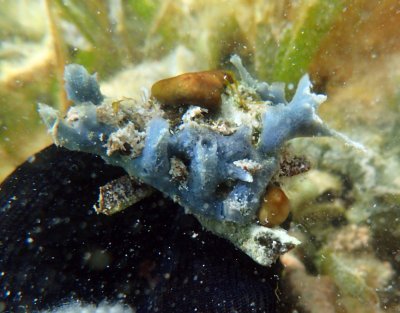
Here is a curious tale. Elaine found this 16” horse conch out in 3-4 feet of wate just out from our Zodiac. She absolutely loves horse conchs. The shells get so big and the body is such a bright orange. Well, can you see the bit of algae near the bottom of it’s foot? When Elaine gave me the conch and was going to take a photo of me with it, I tried to tidy it up and pulled at the algae. I got some, but it was actually inside the conch’s mouth. After the photo, Elaine took the conch back to where she found it and set it on the bottom. As she did, the horse conch spit out a West Indian Conch that it had obviously just eaten. The algae was attached to it’s shell. The inside of the West Indian Conch shell was cleaned out completely. Elaine picked up the shell and we brought it home.

We saw a few big urchins and I didn’t see any small ones. The first photo is how we typically find them, all camouflaged in shells and other debris. The second one is one I cleaned up for a photo. It took him about 90 seconds to cover himself again after I put him back on the bottom!
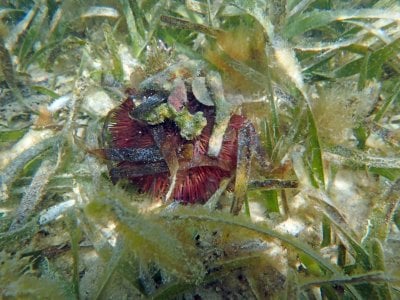
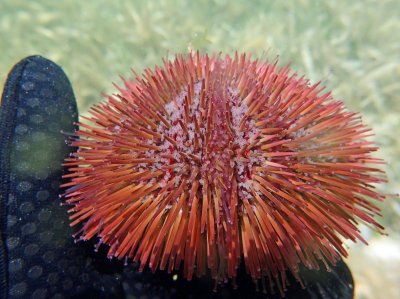
The only small urchin we saw, was a long spine urchin that is uncommon in the bay side water and only just recovering from a serious disease and repopulating the ocean side reefs. So this was kind of special for both of us. These guys get huge when full grown. From the spine tip on one side to the spine tip on the other side they can be as big as 18 to 24 inches. This little guy fit in my hand and the spines were super fine. I held it upside down to inspect it’s mouth and I could feel the spines through the thick layer that is the inside of my dive glove!
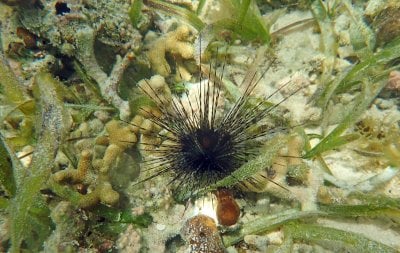
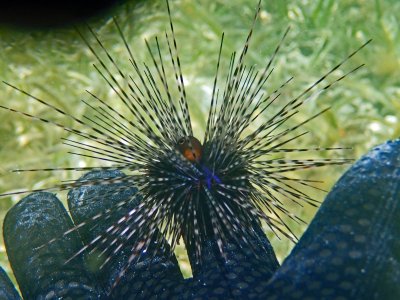
We had so much fun here that even though our friends were coming back from the big reef and going snorkeling just 5 miles away at the Horseshoe, we decided to stay and have lunch in the boat (crazy relaxing) and do another snorkel here after lunch. I'd guesstimate that we have snorkeled at Little Money Key about 8 to 10 times over the last 10 years and every time but one was special. That one time was in the early summer after the Keys had been hit with a severe cold snap in the winter which killed a lot of fish. That summer the amount of yucky slimy algae that covered everything made for an awful experience. This time there was some harder algae over growing the bottom in places that were extra shallow. I assume due to the hurricane and the run off from the island itself after the hurricane.
Before the Irma in 2017, Little Money Key was a lush green island that was so dense with foliage that it was difficult to nearly impossible to see the house on the island. Now the only green left on the island is at the very northern tip which was away from the prevailing winds and saltwater push during Irma. The house is very easy to see and the other 90% of the island is dead trees and dead mangroves.
So here is Little Money Key from above and from the Zodiac looking back to the southwest at the boat ramp just 1/4 mile away. The island is at the southwest end of the Seven Mile Bridge about 1/4th mile off the boat ramp that is right at the end of the bridge. It’s a bit bigger than an average size lot for an average residential home in an average middle class neighborhood and it has 1 house on it. We find it unused 9 out of 10 times that we visit the snorkel area just off the north side of the island. The shot of my feet off the side of the Zodiac is just to show how clear the water was. You are looking through about 3 feet of water at the bottom.



This is one of the 2 sea stars I collected. The other is a light green brittle star. We saw others, but I only wanted 2, one for each tank. I’d say the sea star population out here was a bit below normal and could still be a result of Hurricane Irma form a year and a half earlier.

The common sps finger coral seems to do quite well out here. The bottom is littered with both dead and alive versions. Unfortunately, it is sps coral and therefore illegal to collect ($500 to $1000 fine) and after all, I don’t believe it’s photosynthetic, so it would be difficult to keep anyway.

This one is less common in the shallows as far as we’ve found. It looks a lot more like an sps coral that is more common out on the big reefs some 6 to 8 miles away to the west and south. I wonder if it will still be there when we go back in a couple of weeks with the Ocala Aquarium Club?

I’ve collected green zoas out here and I’ve noticed they have some slightly different pattern as you go from one colony to another. The zoas in the first pic have just a single spoke that divids it in half. The second one has multiple spokes. I also know that under quite strong led lighting (high in my tank) they morph into an almost sky blue color and lose all the spokes of their pattern. But they still grow and reproduce well. The last photo is a view of the underside of a rock that has these green zoas growing on it. On top they look like any zoas in our tanks, but the ones that are underneath have to stretch to get to the light and food!



Elaine saw this little guy, a Dusky Damsel I believe. I'd like to have one of these if only they weren't so aggressive. In fact, a blue and yellow damsel actually bit at my glove a couple of times when I tried to pick up an empty and broken queen conch shell. Pretty obvious to me that it was home to the damsel and I wasn't welcome!


Oh and lets backtrack to yesterday for a second. Here is a photo of a juvenile angelfish we saw at the very end of the day while in the shallows off the beach in front of the marina.

Of course as some of you know, I love anemones and here are a couple of Curly-Q nems that are ultra common around here. They don’t seem to get very big and the tend to attach along the edges or even the undersides of rocks. I’m holding this rock upside down.

My favorite blue sponge. I brought a small one home being very careful to keep it under water all the time and in less than 2 weeks it’s almost gone. Sponges are a serious love/hate relationship for me. I love the look and variation in both colors and shapes. But I hate that 99% of them do NOT do well at all in reef aquariums. Maybe if you had a dedicated sponge tank and feed it specific food, but I don’t know of anybody who has done it successfully.

Here is a curious tale. Elaine found this 16” horse conch out in 3-4 feet of wate just out from our Zodiac. She absolutely loves horse conchs. The shells get so big and the body is such a bright orange. Well, can you see the bit of algae near the bottom of it’s foot? When Elaine gave me the conch and was going to take a photo of me with it, I tried to tidy it up and pulled at the algae. I got some, but it was actually inside the conch’s mouth. After the photo, Elaine took the conch back to where she found it and set it on the bottom. As she did, the horse conch spit out a West Indian Conch that it had obviously just eaten. The algae was attached to it’s shell. The inside of the West Indian Conch shell was cleaned out completely. Elaine picked up the shell and we brought it home.

We saw a few big urchins and I didn’t see any small ones. The first photo is how we typically find them, all camouflaged in shells and other debris. The second one is one I cleaned up for a photo. It took him about 90 seconds to cover himself again after I put him back on the bottom!


The only small urchin we saw, was a long spine urchin that is uncommon in the bay side water and only just recovering from a serious disease and repopulating the ocean side reefs. So this was kind of special for both of us. These guys get huge when full grown. From the spine tip on one side to the spine tip on the other side they can be as big as 18 to 24 inches. This little guy fit in my hand and the spines were super fine. I held it upside down to inspect it’s mouth and I could feel the spines through the thick layer that is the inside of my dive glove!


We had so much fun here that even though our friends were coming back from the big reef and going snorkeling just 5 miles away at the Horseshoe, we decided to stay and have lunch in the boat (crazy relaxing) and do another snorkel here after lunch. I'd guesstimate that we have snorkeled at Little Money Key about 8 to 10 times over the last 10 years and every time but one was special. That one time was in the early summer after the Keys had been hit with a severe cold snap in the winter which killed a lot of fish. That summer the amount of yucky slimy algae that covered everything made for an awful experience. This time there was some harder algae over growing the bottom in places that were extra shallow. I assume due to the hurricane and the run off from the island itself after the hurricane.
Before the Irma in 2017, Little Money Key was a lush green island that was so dense with foliage that it was difficult to nearly impossible to see the house on the island. Now the only green left on the island is at the very northern tip which was away from the prevailing winds and saltwater push during Irma. The house is very easy to see and the other 90% of the island is dead trees and dead mangroves.
Last edited:





